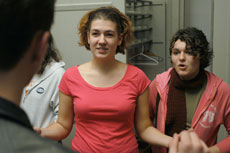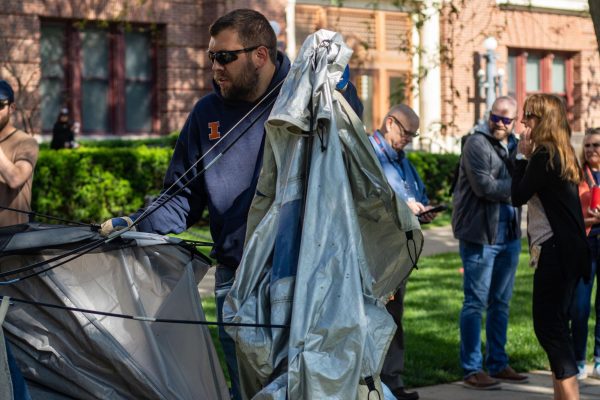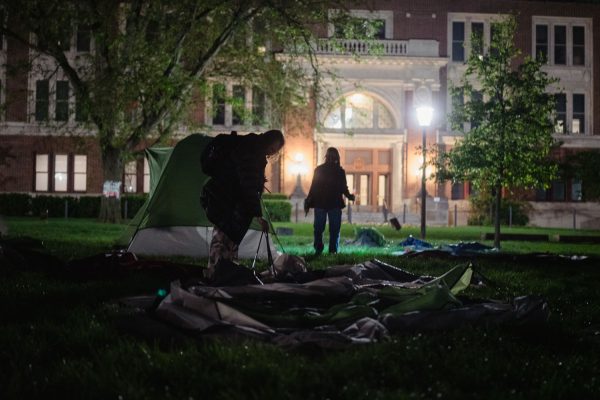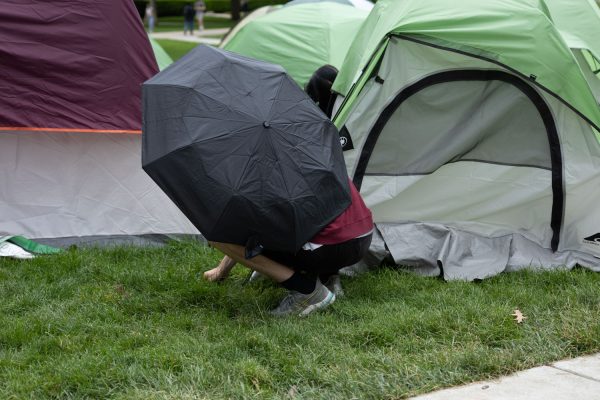Students don sweatshop attire for show

Online Poster
November 10, 2004
Students gathered in the Illini Union Ballroom Tuesday evening in anticipation of a different kind of fashion show. Members of United Students Against Sweatshops (USAS), a national organization and program of the University YMCA, modeled both sweatshop- and non-sweatshop-made clothing.
Victoria Davis, junior in LAS and president of the local USAS chapter, said the anti-sweatshop fashion show was about helping people become aware of the problems in sweatshops and introducing other clothing options to the public.
“We just want to present this in an interesting and non-condemning way, and also allow people to get involved,” she said.
Davis said a fashion show seemed like an obvious choice because apparel was one of the biggest problems when addressing the issue. People employed in sweatshops work under poor conditions and receive very little pay, she said.
“We all wear the same clothes and shop at the same stores,” said Becky Robinson, freshman in LAS and vice president of the local USAS. “That’s why this is a problem.”
Get The Daily Illini in your inbox!
Most of the clothes modeled during the show were Illini apparel that were available in stores such as Follett’s and the Illini Union Bookstore. An Illinois sweatshirt made in Mexico and Illini sweatpants made in Honduras were a few of the items featured on the runway. The majority of University clothing is made in sweatshops, Davis said.
Not all clothing made in the United States is made under government-approved working conditions, Davis explained.
“About half of the garments made in the U.S. are made in sweatshops,” she said.
Carrie Gibson, junior in LAS, was one of four USAS members to model the clothing. Gibson wore alternative apparel made in the United States.
“People aren’t aware that they can buy clothing from thrift stores like the Salvation Army,” Gibson said. “The clothes we wear don’t have to be made in sweatshops.”
Gibson said other colleges such as the University of Wisconsin have had success in working with the school administration to provide non-sweatshop-made clothes. She said USAS was also currently working for the same goals at the University.
Robinson also said options for clothing made under fair labor conditions can be purchased online or from companies who specialize in providing clothing made outside of sweatshops.
People who came to see the fashion show were greeted by pro-sweatshop students who handed out flyers. Leo Buchignani, junior in business, and Andrew Rawlings, freshman in LAS, said they believed getting rid of sweatshops was not a solution to the problem.
“Shops provide jobs for these people, and if you take those away the alternatives are usually worse,” Buchignani said.
Although Davis said she invited them inside to see the fashion show, both pro-sweatshop students declined. Davis said she was not in favor of getting rid of jobs, but objects to the poor working conditions of these jobs.
“I just wish people wouldn’t assume things when they don’t know what our group is about,” she said.
Allison Benefico, a senior in LAS and a member of the Illinois Student Senate, said she came to the fashion show to see how the issue was playing among students.
“It’s a two-sided issue,” she said. “But, somewhere, we need to see if we can strike a balance.”






